The Government of India’s ambitious Pradhan Mantri Awas Yojana — Urban (PMAY-U) ‘Housing for All’ Mission started in June 2015 to provide pucca houses to all eligible urban beneficiaries, will end in December next year. But the mission may still be incomplete because the gap between needs, demand and supply prevails. In fact, the Government of India’s Standing Committee on Housing and Urban Affairs in its report submitted to Parliament has highlighted the need to extend the existing scheme with modification or launch a new scheme to fulfil the mission.
The Ministry of Housing and Urban Affairs, which is implementing the PMAY-U ‘Housing for All’ Mission initially intended to address a total housing shortage of two crore. However, as per the government data, overall 1.19 crore houses have been sanctioned as of 23 August 2023.
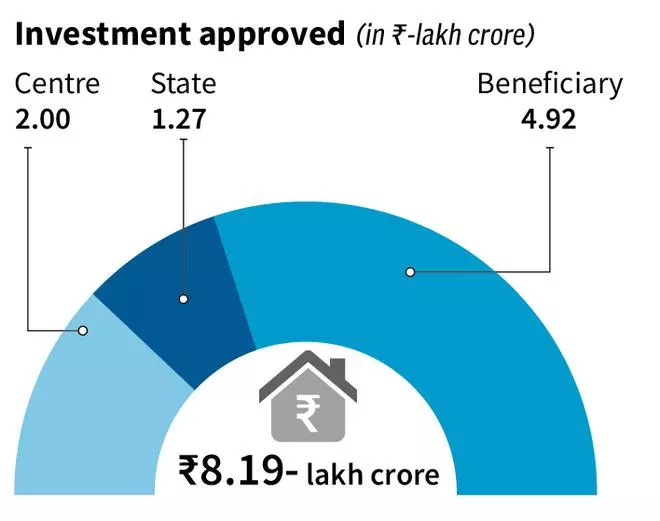
Initially, it was proposed that 1.8 crore slum households and 20 lakh non-slum poor would be covered under the Mission. However, the actual validated demand for housing under PMAY(U) stands at about 1.12 crore (112.24 lakh). The housing shortage was based on estimates, while PMAY-U adopted a demand-driven approach by allowing States and Union Territories to assess housing needs in four vertical areas of PMAY(U).
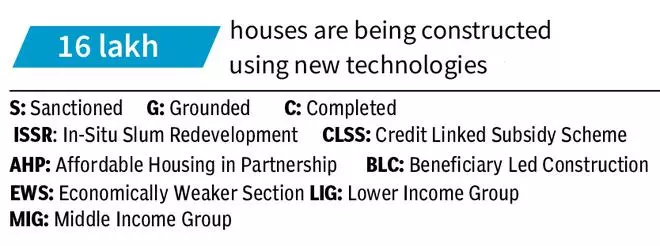
The Ministry has accepted that it did not conduct any independent urban housing need assessment study and the data reveals that ‘Housing for All’ in urban areas seems mission incomplete as of now.
Demand and Supply
According to the 2001 Census, there were 286.1 million people living in urban India. That climbed steeply to 377.1 million in the 2011 Census — a growth of 2.76 per cent annually. Infrastructure challenges in terms of affordable housing remain a challenge with more than 31 per cent of the total population living in urban areas.
The housing shortage estimated by Technical Group (TG)-12 was 1.88 crore over the period 2012-17 while at the slum decadal growth rate of 34 per cent, the slum households were projected to go up to 18 million.
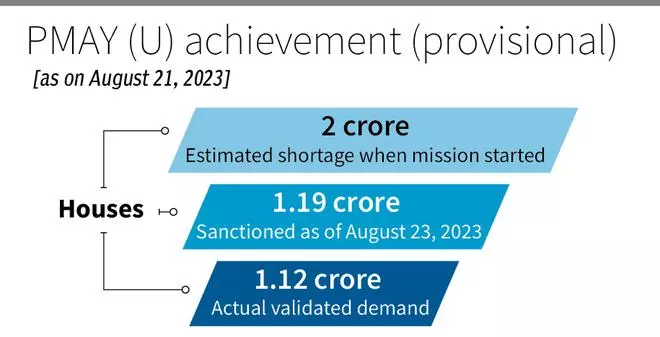
As per the 69th Round Report of NSSO (2012), there were 33,510 slums (notified- 13,761 and non-notified- 19,749) in the country which were having 88,09,007 households.
As per Census 2011 data, the total number of slum households stand at 139.20 lakh and the migrant population at 44.66 lakh. Taken together, the housing need for all States and UTs as per 2011 Census data stands at 183.86 lakh. However, only some States — Andhra Pradesh, Bihar, Gujarat, Jharkhand, Kerala, Assam, Manipur, Tripura Andaman and Nicobar island (UT) have demand assessed more than the total number of slums and a number of migrants taken together.
The projected demand by other States is lower than the sum of slum household and migrant population data of 2011 Census. Hence, the demand generated by various States and UTs which was later validated by the Ministry of Housing and Urban Affairs remains short of the actual housing shortage. However, the Ministry relied on States and urban local bodies to assess the actual demand in their jurisdiction without imposing any ceiling.
New scheme?
The Standing Committee has recommended that the Ministry conduct an impact assessment study of the scheme to find out the ground realities. The Committee has also asked the Ministry to explore the feasibility of either extending the existing scheme with modifications based on an impact assessment study or formulating another such scheme to benefit the urban poor at large to achieve the objective of “Housing for All”.
Popularity of beneficiary-led construction
The scheme is implemented through four verticals — Beneficiary Led Construction (BLC), Affordable Housing in Partnership (AHP), In-Situ Slum Redevelopment (ISSR) and Credit Linked Subsidy Scheme (CLSS) based on eligibility criteria as per scheme guidelines.
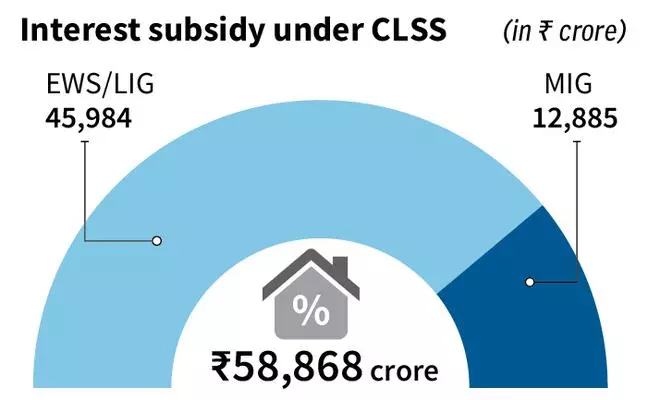
ISSR includes slum rehabilitation of slum dwellers with the participation of private developers using land as a source while CLSS includes promotion of affordable housing through credit linked subsidy.
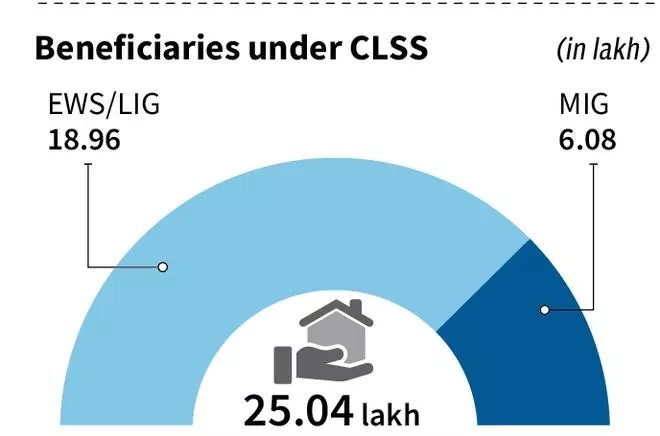
AHP aims to provide affordable housing in partnership with public and private sectors while BLC includes subsidies for beneficiary-led individual house construction/enhancement. Interestingly the government data shows that a maximum number of projects were sanctioned under the BLC vertical (60 per cent) and a minimum number of projects under ISSR vertical (3 per cent).
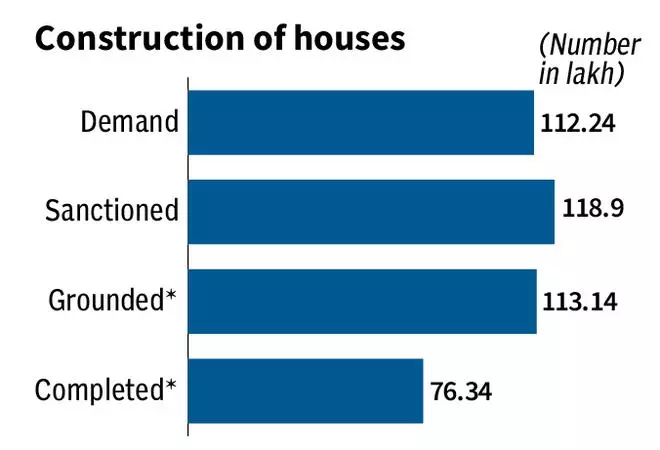
“The States also find it more convenient to give houses in smaller cities and to people who have their own land. This is why, we have seen BLC vertical growing up”, the Ministry told the Standing Committee.

Ministry is misleading?
The government data shows that a total of 5,13,654 houses are ‘unoccupied’ under AHP vertical. According to the Ministry as per standard practices, construction in AHP vertical is taken up block by block where each block consists of multiple dwelling units.
“As soon as the block gets completed, Mission acknowledges the completion of number of houses but, such completed dwelling units are unsafe for occupancy due to ongoing on-site construction activities including infrastructure facilities for other remaining blocks” the Standing Committee report mentions.
Such blocks/units become habitable only once all the on-site construction activities are over including physical and social infrastructure facilities.
“ The Committee is given to understand that the physical completion of houses, pending completion of the entire project and pending availability of basic amenities, is being counted as ‘completed’ houses. The Ministry without ensuring the liveability and occupancy of the houses which is the actual target of the mission is focusing on merely output,” the Standing committee stated in its March 2023 report.
The report added, “The committee strongly feels that this approach of the Ministry is misleading. The Ministry being the nodal agency should show the result in terms of outcome, that is, the number of houses actually occupied by beneficiaries and not merely output in terms of houses completed”.








Comments
Comments have to be in English, and in full sentences. They cannot be abusive or personal. Please abide by our community guidelines for posting your comments.
We have migrated to a new commenting platform. If you are already a registered user of TheHindu Businessline and logged in, you may continue to engage with our articles. If you do not have an account please register and login to post comments. Users can access their older comments by logging into their accounts on Vuukle.